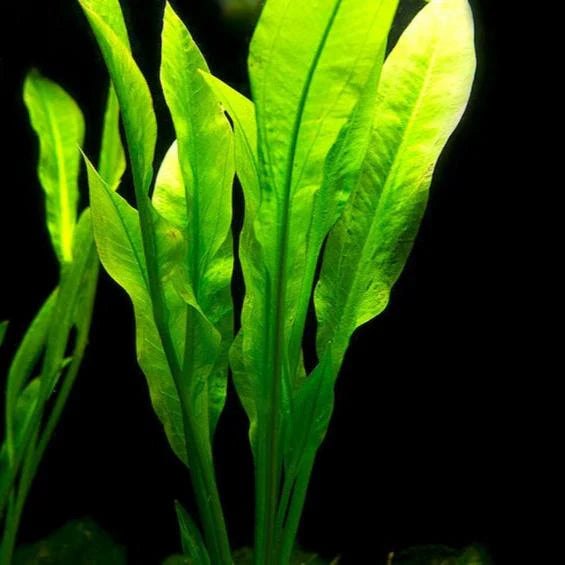🌿 Amazon Sword (Echinodorus Amazonicus) - Lush Freshwater Aquarium Plant
Create a vibrant underwater landscape with the majestic Amazon Sword (Echinodorus Amazonicus). Known for its broad, sword-like leaves and rapid growth, this plant serves as an excellent background or centerpiece in freshwater aquariums. Its hardy nature and low-maintenance requirements make it an excellent choice for beginners and seasoned aquarists alike.
Amazon Sword Quick Facts
| Feature | Details |
|---|---|
| 🌍 Origin | South America |
| 📏 Size | 12 - 20 inches |
| 💡 Lighting | Moderate to high |
| 🌡️ Temperature | 72°F - 82°F (22°C - 28°C) |
| 💧 pH Range | 6.5 - 7.5 |
| 🎨 Color | Bright green, long sword-like leaves |
| 🪴 Position in Tank | Background |
| 🌟 Difficulty | Beginner-friendly (easy to moderate) |
| 🐟 Compatibility | Betta fish, Neocaridina/Caridina shrimp, snails, community fish |
Why Choose Amazon Sword?
- ✔️ Lush and full-bodied – Creates a stunning natural backdrop for aquariums.
- ✔️ Oxygenates water – Improves water quality by absorbing excess nutrients.
- ✔️ Provides shelter – Ideal for fish and shrimp seeking hiding spots.
- ✔️ Hardy and adaptable – Thrives in a variety of freshwater setups.
How to Care for Amazon Sword
Care Tips
- Lighting: Prefers moderate to high lighting for optimal growth.
- Placement: Best suited as a background or midground plant in large aquariums.
- Substrate: Thrives in nutrient-rich substrate; root tabs are recommended for extra growth.
- Fertilizer: Regular root fertilization and liquid fertilizer will enhance leaf vibrancy.
- Maintenance: Trim older leaves at the base to encourage new growth.
Propagation Steps
- Wait for Runners: The plant naturally produces side shoots or runners.
- Separate the Baby Plants: Once the plantlets have roots, carefully cut them from the main plant.
- Replant: Place the new plantlets into the substrate and allow them to establish.





